May is Mental Health Awareness month, and Giving Assistant is shining a light on mental health nonprofits like Mindfulness First: an organization working hard to improve the mental health and wellbeing of America’s students and teachers.
Learn more about mindfulness, what Mindfulness First is and how they are making an impact, plus find out how you can help support their mission.
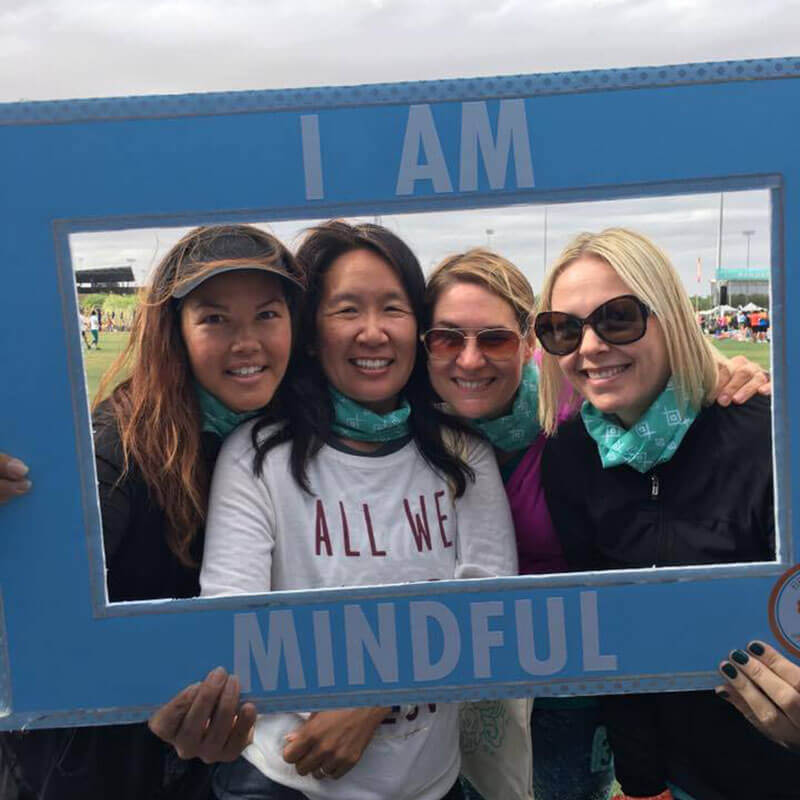
Mindfulness First: Transforming Classrooms and Communities
Imagine: You’re eight years old, sitting in art class, putting the finishing touches on the collage you’ve been working hard on all week, when disaster strikes.
Your notoriously boisterous classmate Ted (who for some reason felt like now would be a great time to do the chicken dance in his seat right beside you) knocks a whole cup of black paint over with his elbow, spilling it all over your table, your clothes—and your collage.
A month ago, you might have cried out and swept everything off your desk onto the floor in one angry motion, or grabbed the empty paint cup and chucked it at Ted.
You might have had a hard time concentrating the rest of the day, failing a spelling test you were totally prepared for, or being grouchy towards your friends at recess.
But instead, you stop. You breathe.
You use the tools your teachers have taught you—tools they gained from professional development programs provided by the nonprofit Mindfulness First.
And with renewed clarity (and after calmly accepting Ted’s heartfelt apology) you realize: with a bit more glitter and a few gold star stickers, this black-paint-covered collage catastrophe might actually make for a pretty stellar night-sky abstract…
What is Mindfulness?
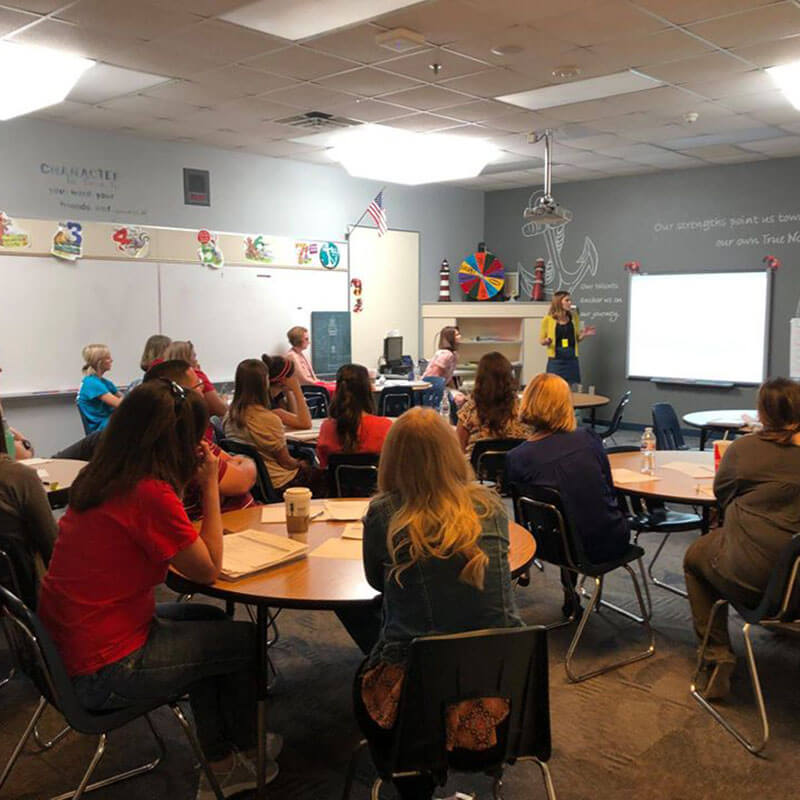
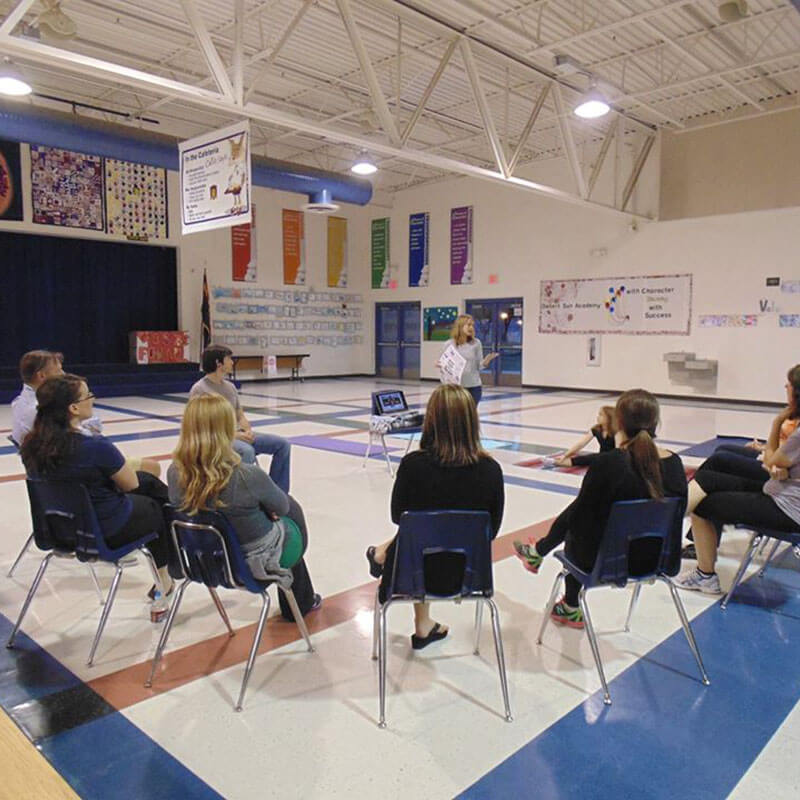
Mindfulness is the “the active noticing of what’s happening inside and outside of your body” according to the Arizona-based nonprofit Mindfulness First, an organization changing the face of education—and changing lives—by adding emotional wellness to curriculums nationwide.
Mindfulness, like meditation, can be done anywhere. At its core, it’s about noticing the present moment, learning to let go of judgements, and creating a kind, positive internal dialogue. Several exercises can help people practice mindfulness, like 3-minute body-scanning (where you attempt to notice sensations in your body from your toes, to the crown of your head) or mindful breathing, where you work to control your breath, and likewise notice the sensations.
What is Mindfulness First?
Mindfulness First, founded in 2013 by Sunny Wight and Kimberly Narde, is a nonprofit that brings Mindfulness-Based Social and Emotional Learning (MBSEL) to K-12 schools across America, both through their own programming and presentations, and by providing professional development to teachers, administrators, and community leaders, enabling them to practice and teach mindfulness on their own.
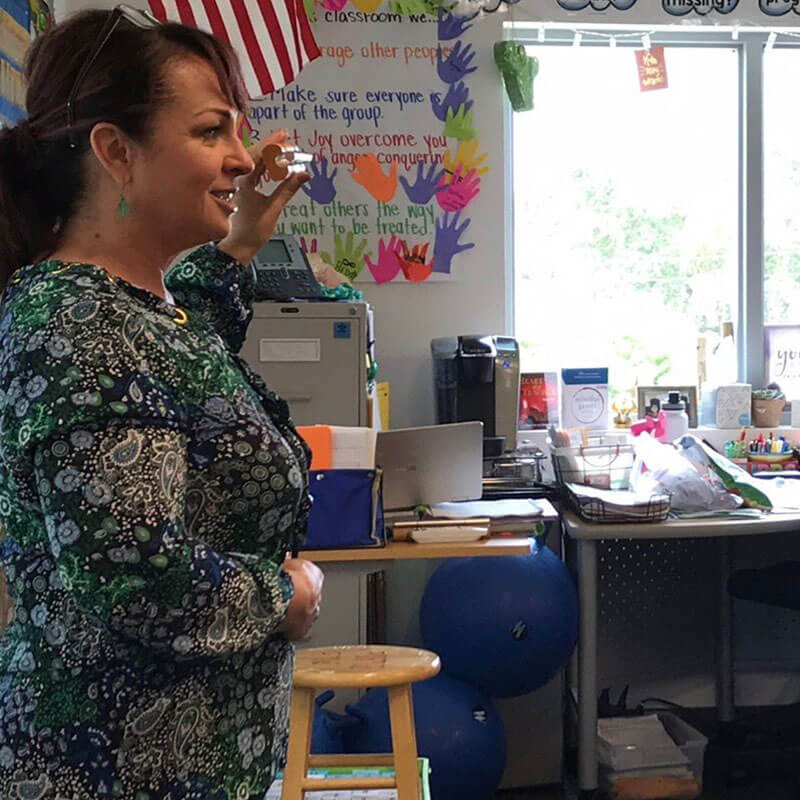
The nonprofit, which has impacted nearly 15,000 people across the country to date, believes that school should not only teach us reading, writing, and math, but should “prepare us for all aspects of life,” and “give us a foundation in self-understanding.”
How Does Mindfulness Help Students?
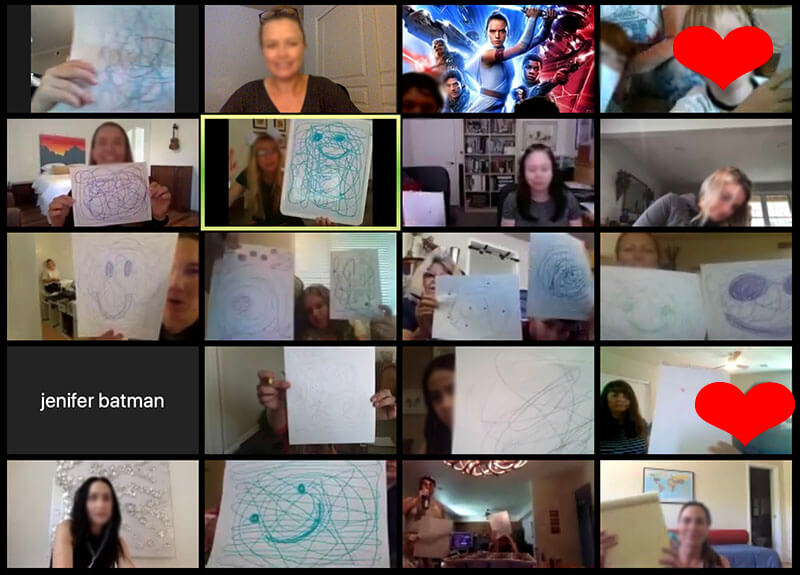
Research suggests that mindfulness can help students by decreasing instances of school bullying, reducing overall stress, and improving student outcomes, all of which creates a ripple effect that positively benefits students’ health and overall communities.
Mindfulness also helps both students and teachers:
- strengthen relationships
- increase empathy
- improve self-regulation
- increase self-awareness
- increase awareness of biases
- enhance resilience
According to Mindfulness First: “MBSEL helps children to become critical thinkers and helps them to reach their full potential.”
What Does Mindfulness First Do?
In addition to their own school programming, Mindfulness First provides educators with a selection of mindfulness-based courses (including online courses) that make it easy for them to bring MBSEL into their own schools, and that can also earn them professional development credits. Perhaps more importantly, these courses help decrease teacher-burnout, chronic stress, and fatigue—and help reinvigorate the classroom.
In addition to courses, Mindfulness First offers a mentorship and a group program to support educators.
Spotlight Fact: Mindfulness First hosts virtual Mindful Parties anyone can attend, where participants learn about different types of mindfulness, take part in activities, and more. To support their efforts in schools, they also offer an online Intro to Mindfulness course anyone can enroll in. Learn more on their site, or text MINDFUL to 602-603-0335.
How to Take Mindfulness First Online Courses
Teachers and school professionals can find the nonprofit’s courses on their site. As of May 2020, some courses are being updated or revised, but several online courses are available, like Foundations for Mindful Educators. For educators in need of financial support, some scholarships may be available: inquire about them via their contact form.
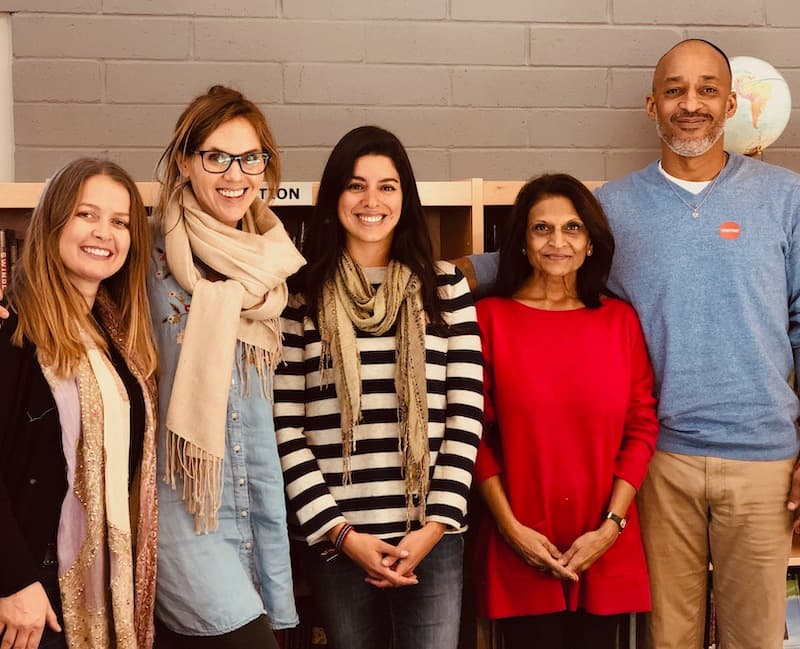
How to Support Mindfulness First
Here are 6 easy ways to support Mindfulness First:
- Give directly through their site.
- Inquire about sponsoring an educator. Your sponsorship can provide an educator with a scholarship that will enable them to enroll in a Mindfulness First course.
- Officially help spread awareness of mindfulness education and bring courses to community schools via the nonprofit’s Ambassador Program.
- Inquire about volunteer opportunities. Dozens of roles are available, from training to fundraising.
- Shop with Giving Assistant and donate your cash back earnings. Our average shopper earns around $150 in cash back yearly. That means that just by shopping online, even a small community of 5 or 6 people—like you and your friends, or a few classroom parents—could donate enough cash back in 12 months (or less!) to fund a scholarship to Mindfulness First’s top foundational course—and change hundreds of lives.
- Start your own fundraiser!
Conclusion
As for eight-year-old you and that collage-catastrophe?
Thanks to the work of Mindfulness First, the moment you felt that familiar, angry heat rising in the pit of your stomach, rather than chucking that paint cup at poor Ted, you chose to stop, breathe, and ground yourself with a quick, calming mindfulness exercise.
And since your teacher went through one of Mindfulness First’s teacher trainings, he knew how to ground himself too, allowing him to provide both you and Ted with the calm support you needed rather than traditional, unhelpful, knee-jerk consequences.
In that moment, your class became stronger, more peaceful, and more resilient at the sight of everyone’s positive response to the paint-mishap.
Give Back to Mental Health Awareness Through Charitable Shopping
When you use Giving Assistant to shop you can support Mindfulness First or any mental health nonprofit by donating your free cash back. Collectively, these micro-donations add up and help nonprofits like Mindfulness First reach their fundraising and impact goals.
You can also shop these brands supporting mental health causes while donating your cash back earnings to Mindfulness First—or another nonprofit you love! Every cent makes a difference.
